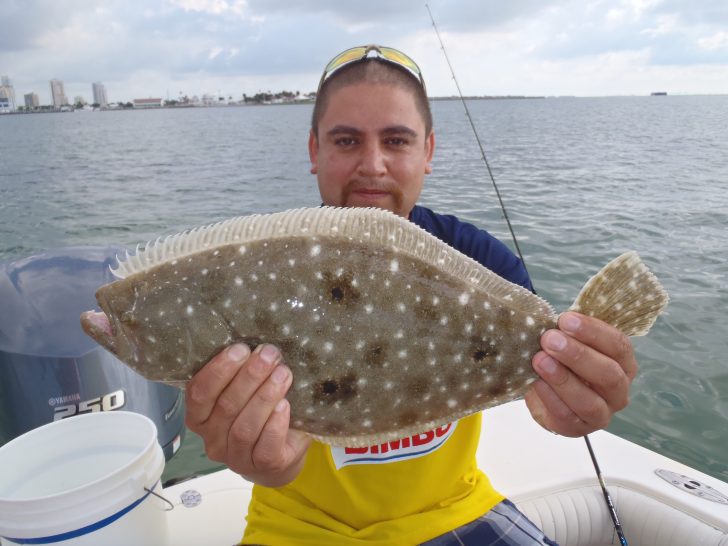Pot Luck Month
January can be cold and windy. Sometimes, if we get lucky, we can have some really beautiful days. The temperature will tell us what to do. If water temperatures are in the mid-sixties or lower, snook action is out, unless we fish the rivers or around the power plants. We can be different and explore new adventures by trying some new techniques and areas.
Dock Fishing: Dock fishing is a very productive way to catch fish during the colder months. As the docks take in sunlight, they radiate the heat through the piling into the water increasing the temperature up to three degrees warmer. This will bring in some species, not only to keep warm but, also, to feed on the bait fish that have the same idea for keeping warm.
Live shrimp works great this month, along with a 1/0 circle hook and a 15-pound fluorocarbon leader about 32-inches long for free lining under the docks. Remember, at this time of year, the water is extremely clear, so the light leader helps a lot in getting more strikes. I also use a yellowtail jig. It’s nothing more than a 1/0 hook with lead on the shank available in 1/16 or 1/8 ounce. This allows me to keep the bait close to the bottom where reds, flounder and sheepshead tend to hang out. You can use the same method as fishing with artificial baits by working the shrimp along the bottom with a slow retrieving action. This helps in locating where the fish are staging.
Drop-offs: I prefer to use artificial baits this time of year, working them slowly along the banks and edges of drop-offs. I can cover more area and increase my chances of finding fish. Look for holes along the mangrove line or points where the currents have dredged cuts or pockets. Producing any change in the depth of water will make a big difference to fish during the winter.
Rocky shorelines: Look for areas that have rocks close by or exposed during low tides. They draw heat and, again, increase the water temperature around them. This is a perfect spot for speckled trout, if the rocks are close to grass flats. Flounder are a good by-catch in many cases, as they tend to look for a food source and the rocks are a magnetic for all small creatures.
Be different: Sheepshead are one of my favorites during the winter months, as they prove to be great fighters on light tackle. Feeding on mostly shrimp, fiddlers, small crabs and barnacles they are considered a great table fare. Some anglers even call them chicken of the sea. The big females prefer the deeper waters of Tampa Bay. They hang around the ledges, wrecks and rock piles in anywhere from 12 to 30 feet of water. They average in size from 4 to 8 pounds. Here I prefer to use medium tackle, a 7-foot medium action rod with a 4000 spinning reel spooled with 15-pound test braided line and 25-pound test fluorocarbon leader tied with a loop knot to a number 1/0-circle hook. I use a Texas rig where the sinker slides on the leader just ahead of the hook. I, also, use a small glow soft bead, because this keeps the sinker from hitting the knot and the glow beads seem to draw the attention of the larger fish. Live shrimp, fiddler crabs, bloodworms and sand fleas are some of their favorite baits. Smaller sheepsheads prefer docks and oyster bars in shallow water. So, just downsize your tackle and enjoy catching a great fighting fish.
Power plants: Can’t leave them out, as there is great fishing early and you never know what you can catch. Best bet for me is using a banana jig with a medium size live shrimp worked slowly on the bottom for pompano and big trout. Let’s not forget jacks. They offer a super fight for their size and, in many cases, pure entertainment for the young ones.

